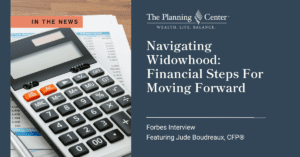What is a financial advisor for? One view is that advisors have unique insights into market direction that give their clients an advantage. But of the many roles a professional advisor should play, soothsayer is not one of them.
The truth is that no one knows what will happen next in investment markets. And if anyone really did have a working crystal ball, it is unlikely they would be plying their trade as an advisor, broker, analyst, or financial journalist. Some folks may still think an advisor’s role is to deliver market-beating returns year after year. Generally, those are the same people who believe good advice equates to making accurate forecasts.
But, in reality, the value a professional advisor brings is not dependent on the state of markets. Indeed, their value can be even more evident when volatility and emotions are running high.
The best of this new breed play multiple and nuanced roles with their clients. None of these roles involve making forecasts about markets or economies. Indeed, there are at least seven hats an advisor can wear to help clients without ever once having to look into a crystal ball:
1. The Expert: Investors need advisors who can provide client-centered expertise in assessing the state of their finances and developing risk-aware strategies to help them meet their goals.
2. The Independent Voice: The global financial turmoil of recent years has demonstrated the value of an independent and objective voice in a world full of product pushers and salespeople.
3. The Listener: A good advisor will listen to clients’ fears, tease out the issues driving those feelings, and provide practical long-term answers.
4. The Teacher: Getting beyond the fear and flight phase often is just a matter of teaching investors about risk and return, diversification, the role of asset allocation, and the virtues of discipline.
5. The Architect: Once these lessons are understood, the advisor becomes an architect, building a long-term wealth management strategy that matches each person’s risk appetites and lifetime goals.
6. The Coach: Even when the strategy is in place, doubts and fears inevitably arise. At this point, the advisor becomes a coach, reinforcing first principles and keeping the client on track.
7. The Guardian: Beyond these experiences is a long-term role for the advisor as a kind of lighthouse keeper, scanning the horizon for issues that may affect the client and keeping them informed.
These are just seven valuable roles an advisor can plan in understanding and responding to clients’ whole-of-life needs, which are a world away from the old notions of selling products off the shelf or making forecasts. Knowing the advisor is independent—and not plugging products—can lead the client to trust the advisor as a listener or sounding board. From this point, the listener can become the teacher, architect, coach, and, ultimately, the guardian.
Just as people’s needs and circumstances change over time, the nature of the advice service evolves. However you characterize these various roles, good financial advice ultimately is defined by the patient building of a long-term relationship founded on the values of trust and independence and knowledge of each individual. Now, how can you put a price on that?
Adapted from “The Seven Roles of an Advisor” by Jim Parker. Diversification does not eliminate the risks of market loss. There is no guarantee investment strategies will be successful. Past performance is no guarantee of future results. All expressions of opinion are subject to change without notice in reaction to shifting market conditions. This content is provided for informational purposes, and it is not to be construed as an offer, solicitation, recommendation, or endorsement of any particular security, products, or services.







